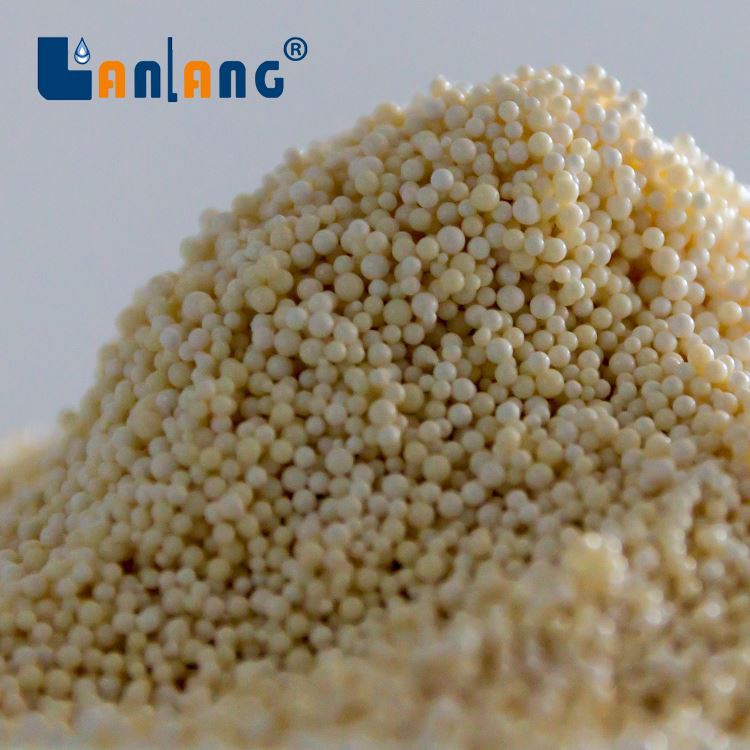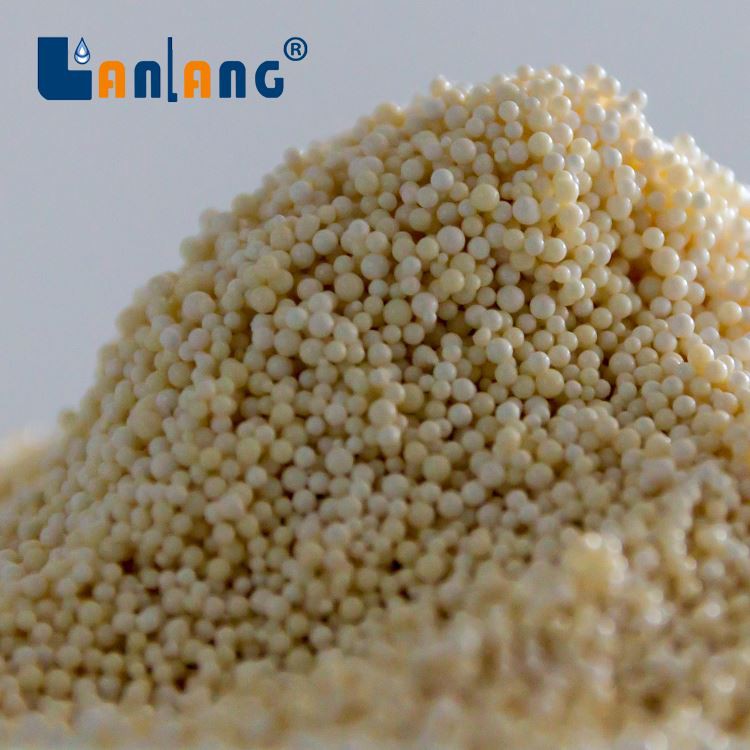Hospital wastewater is a complex and hazardous mixture that contains a variety of contaminants, including heavy metals, pharmaceuticals, pathogens, and radioactive substances. The improper treatment of hospital wastewater can pose significant risks to human health and the environment. Chelating resins have emerged as a promising solution for the treatment of various types of wastewater, but can they be effectively used in the treatment of hospital wastewater? As a chelating resin supplier, I will explore this question in detail.

Understanding Chelating Resins
Chelating resins are a type of ion exchange resin that have specific functional groups capable of forming strong, reversible bonds with metal ions. These functional groups are designed to selectively bind to certain metal ions based on their size, charge, and chemical properties. The chelation process allows for the removal of metal ions from solution, even at low concentrations.
Chelating resins offer several advantages over traditional ion exchange resins. They have a higher selectivity for specific metal ions, which means they can target and remove only the desired metals without affecting other components in the solution. They also have a higher capacity for metal binding, which allows for the treatment of larger volumes of wastewater with less resin. Additionally, chelating resins can be regenerated and reused, making them a cost - effective and sustainable option for wastewater treatment.
There are different types of chelating resins available, each designed for specific applications. For example, Chelating Resin for Borate Removal is specifically formulated to remove borate ions from water. Chelating Resin for Gallium Removal is used to extract gallium from solutions, which is important in the electronics industry. And Chelating Resin for Heavy Metal Recovery can be used to recover valuable heavy metals from wastewater while also reducing their environmental impact.
Contaminants in Hospital Wastewater
Hospital wastewater contains a wide range of contaminants that require careful treatment. Heavy metals such as mercury, lead, cadmium, and chromium are often present due to the use of medical equipment, laboratory reagents, and pharmaceuticals. These heavy metals are toxic and can cause serious health problems, including neurological damage, kidney failure, and cancer.
Pharmaceuticals and personal care products (PPCPs) are another major concern in hospital wastewater. These substances can include antibiotics, analgesics, hormones, and disinfectants. When released into the environment, PPCPs can have adverse effects on aquatic organisms and may contribute to the development of antibiotic - resistant bacteria.
Pathogens, such as bacteria, viruses, and fungi, are also abundant in hospital wastewater. These microorganisms can cause infectious diseases and pose a significant risk to public health if not properly treated. Radioactive substances may be present in hospital wastewater due to the use of radiopharmaceuticals in diagnostic and therapeutic procedures.

Can Chelating Resins Treat Hospital Wastewater?
The answer is yes, chelating resins can play a crucial role in the treatment of hospital wastewater, especially when it comes to heavy metal removal. The high selectivity of chelating resins allows them to target specific heavy metals present in hospital wastewater. For example, resins with thiol functional groups can selectively bind to mercury ions, while iminodiacetic acid - based resins can effectively remove copper, nickel, and lead.

In addition to heavy metal removal, chelating resins can also be used in combination with other treatment processes to enhance the overall treatment efficiency. For instance, they can be used after biological treatment to remove residual heavy metals that may not have been completely removed by the biological process. They can also be used in pretreatment steps to protect downstream treatment units from the adverse effects of heavy metals.
However, it's important to note that chelating resins alone may not be sufficient to treat all the contaminants in hospital wastewater. While they are effective for heavy metal removal, they have limited ability to remove pathogens, PPCPs, and radioactive substances. Therefore, a comprehensive treatment approach that combines chelating resin technology with other treatment methods such as biological treatment, disinfection, and advanced oxidation processes is usually required.
Case Studies
There have been several successful case studies where chelating resins have been used in wastewater treatment, which can provide insights into their potential application in hospital wastewater treatment. In industrial wastewater treatment, chelating resins have been used to remove heavy metals from electroplating wastewater and mining wastewater. These applications demonstrate the effectiveness of chelating resins in removing heavy metals from complex wastewater matrices.
In the context of hospital wastewater, a case study could involve a small - scale hospital that implemented a treatment system using chelating resins for heavy metal removal. By installing a chelating resin column in their wastewater treatment plant, the hospital was able to significantly reduce the concentration of heavy metals in their effluent. The treated wastewater met the local environmental discharge standards, and the recovered heavy metals could potentially be recycled, adding an economic benefit to the treatment process.
Considerations for Using Chelating Resins in Hospital Wastewater Treatment
When considering using chelating resins in hospital wastewater treatment, several factors need to be taken into account. Firstly, the type of chelating resin needs to be carefully selected based on the specific heavy metals present in the wastewater. Different resins have different selectivities and capacities for different metal ions.
Secondly, the operating conditions, such as pH, temperature, and flow rate, need to be optimized. Chelating resins typically have an optimal pH range for metal binding, and the temperature can also affect the binding kinetics. The flow rate of the wastewater through the resin column needs to be carefully controlled to ensure sufficient contact time between the resin and the metal ions.
Regeneration of the chelating resin is another important consideration. The regeneration process should be efficient and cost - effective. The regenerant used should be able to effectively remove the bound metal ions from the resin without causing significant damage to the resin structure.
Conclusion
Chelating resins have great potential in the treatment of hospital wastewater, particularly for the removal of heavy metals. Their high selectivity and capacity make them an attractive option for this application. However, a comprehensive treatment approach that combines chelating resin technology with other treatment methods is necessary to effectively treat all the contaminants in hospital wastewater.
As a chelating resin supplier, we are committed to providing high - quality chelating resins and technical support for hospital wastewater treatment. If you are interested in exploring the use of chelating resins in your hospital's wastewater treatment system, please feel free to contact us for further discussion and procurement. We can help you select the most suitable resin for your specific needs and provide guidance on the installation and operation of the treatment system.
References
- Crini, G., & Badot, P. M. (2008). Flocculation, coagulation and adsorption processes for removal of metal ions from industrial wastewaters: a review. Journal of Environmental Management, 88(2), 449 - 469.
- Valsami - Jones, E., & Leybourne, M. I. (2009). The environmental geochemistry of heavy metals in urban hospital wastewaters. Science of the Total Environment, 407(14), 4232 - 4240.
- Foo, K. Y., & Hameed, B. H. (2010). Insights into the modeling of adsorption isotherm systems. Chemical Engineering Journal, 156(1), 2 - 10.
